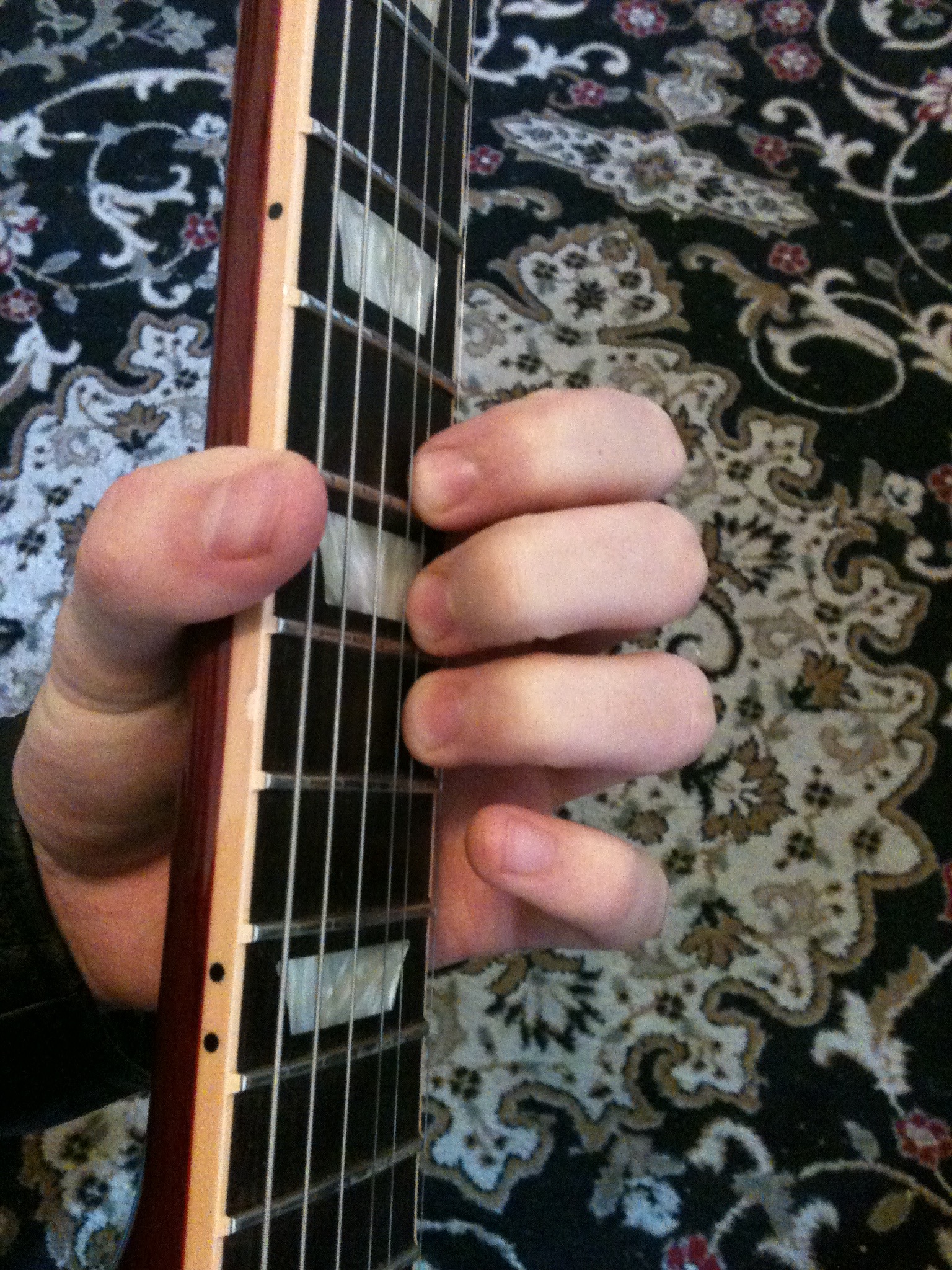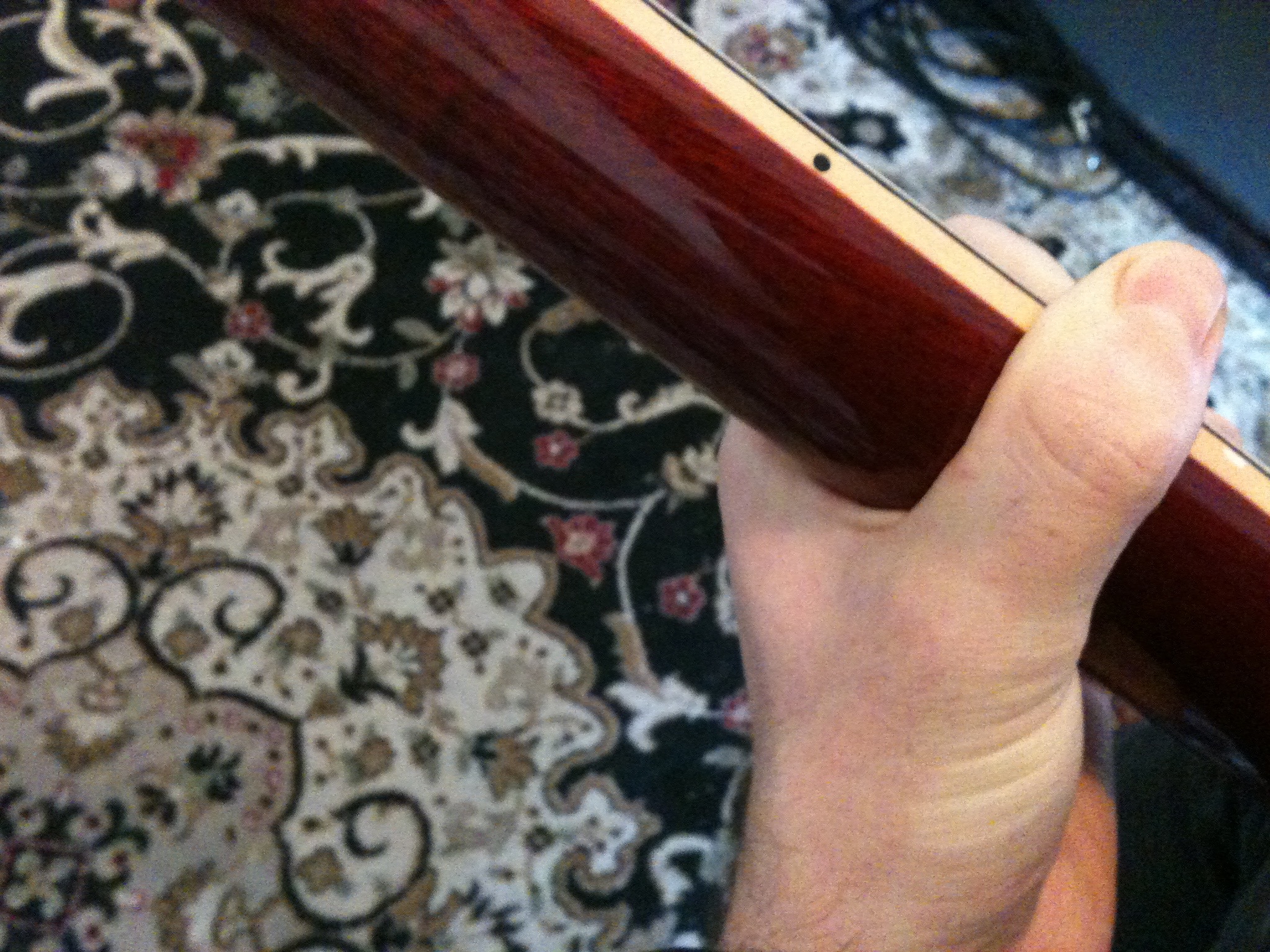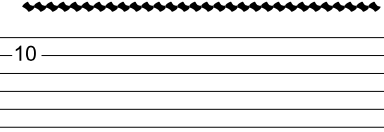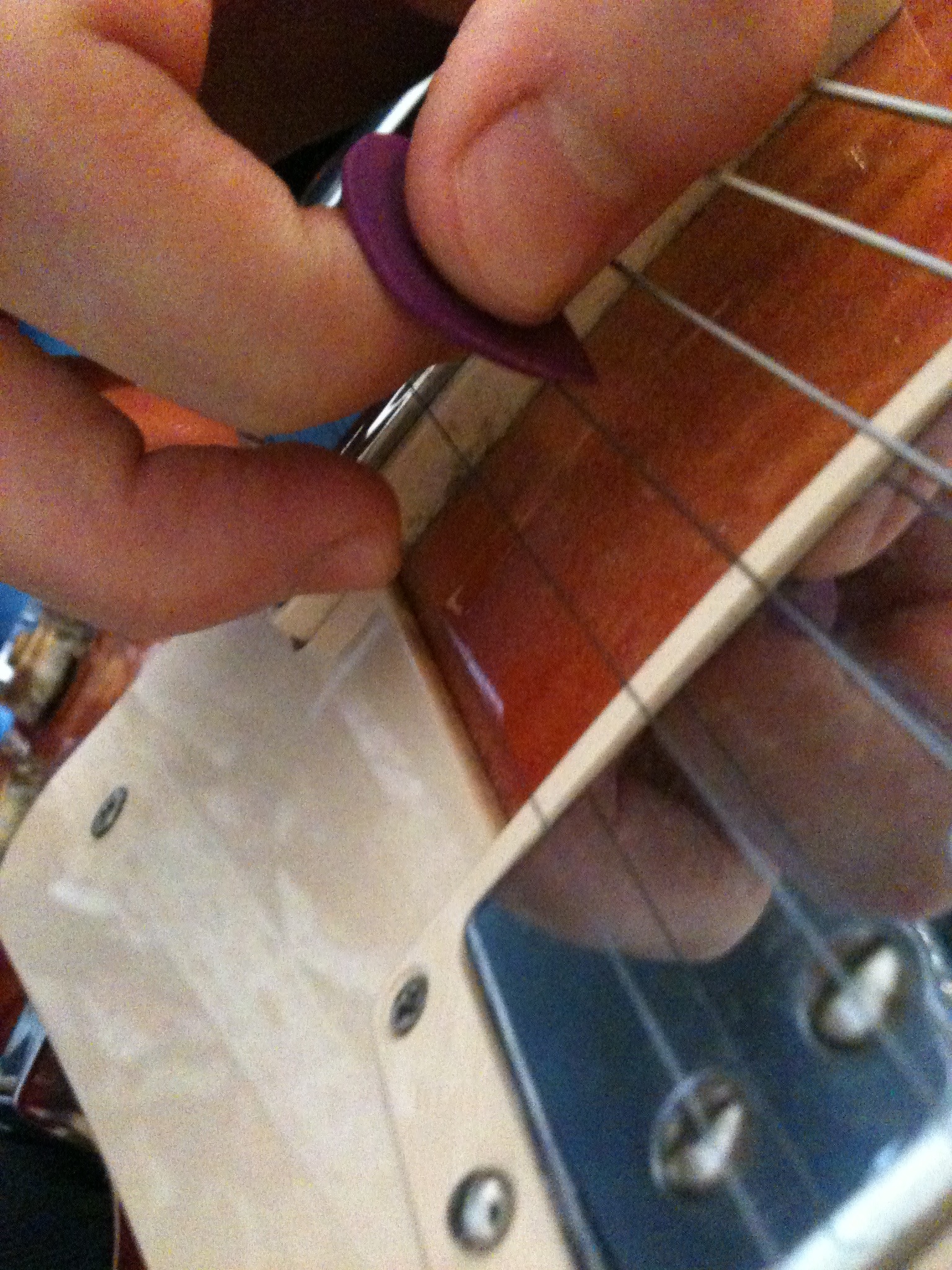The Fundamentals Of Great Vibrato
Todays lesson will be dedicated to the fundamentals of possibly the most important technique for lead guitar players.
A technique that separates good players from great players, a technique that can either make you sound like a guitar God or a guitar hack, a technique that can turn your solo’s into exciting, world-class master pieces, or underwhelming, amateur bore-fests.
What is this amazing, defining technique?
Is it fast picking or legato?
Is it sweep picking or tapping?
No, its more important then them, its vibrato.
Yes, that’s right, vibrato.
Vibrato is one of the most important techniques for amazing rock guitar, and if you want to become an amazing rock guitarists, then you had better take that statement to heart, because that’s exactly what all the rock guitar greats have done.
Think about it, what is the only technique that can take one note and turn it into music. It’s vibrato. What is the only technique that an amazing guitar solo would absolutely have to include? It’s vibrato. What is the technique that every single rock guitar great has mastered? It’s vibrato.
All the rock guitar greats may not be as fast as one another, they may all have their own unique styles, but they all have one thing in common, they all have great vibrato.
If I can teach you anything at all, its that vibrato should be regarded as one of the most important techniques for great guitar soloing and it should be placed along side the other techniques that you hold as important for great guitar soloing.
Yet, to this day, I am encountered by guitarists who have established reasonable technical ability, but their solo’s are completely underwhelming because they have never regarded vibrato as important, instead they have skipped it and worked on more faster and flashier concepts.
I have mentored some guitarists who when they first came to me, didn’t even regard vibrato as a technique (and they wondered why their solo’s sounded completely lacking). As soon as these same guitarist embraced vibrato as possibly the most important soloing technique, they become astonishingly better within a few weeks.
I want to give you something to remember for the rest of your musical life, I want this saying to ring in your ears so long as you live with an electric guitar in your hands: “You are only as good as your vibrato.” Remember that saying, let it serve you well.
If you where unaware of the importance of vibrato before, or you regarded vibrato as unimportant and trivial, I hope this has caused a radical paradigm shift.
Now that you have been thoroughly educated on the critical importance of vibrato, and understand that vibrato is possibly the most important soloing technique in existence, you’ve passed the point of no return, there’s no going back now, once a rubber band has been stretched, it will never return to its original size, welcome to the revolution! Viva La Vibrato!
So without further a due, lets take an in-depth look at the fundamentals of possibly the guitar world’s most important soloing technique, vibrato.
The Fundamentals of Great Vibrato
The fundamentals of great vibrato are but are not limited to:
- Understanding the mechanics of vibrato.
- Holding the neck for optimum vibrato potential.
- Gripping the string for vibrato.
- Executing vibrato with steady rhythmic pulses.
- Executing vibrato with steady rhythmic pulses on all fingers
- Executing vibrato with steady rhythmic pulses on all strings.
- Muting surrounding strings for sustained vibrato.
- Vibrato variety.
Understanding The Mechanics Of Vibrato
First of all, its important to understand what vibrato actually is.
Vibrato is essentially a bend, its a small bend of around a ¼ of a tone. Since vibrato is essential a bend, standard bending mechanics still apply, so its important to assist your vibrato with supporting fingers placed in the respective frets behind the finger leading the vibrato.
This bend is bent to the same pitch then released to the same original pitch repeatedly in steady rhythmic pulses. The pulse of your vibrato should be controlled and steady, it should pulse consistently at the same rhythm.
You should be able to measure the rhythmic pulses of your vibrato with a metronome. The standard rock vibrato will be bent around a ¼ of a tone and pulse 4 times per beat of a metronome set at 65 BPM.
Vibrato is a combination of pushing or pulling the string up or down by keeping your finger in place and turning your fore-arm and wrist as if you where turning a door knob.
Now that you have been educated on the mechanics of great vibrato, I want to talk about the mechanics of not so great vibrato. Like we established before, vibrato is a type of bend, NOT a twitch.
No good will ever come from fretting a note and frantically twitching your hand (and in some cases entire arm) like you have just seen a ghost. This problem is one of the most common bad vibrato mechanics.
Another is removing additional finger support, and just clinging to the string with the one finger your are leading your vibrato with, then attempting vibrato – which usually sounds more like the dreaded twitch (I swear their should be some sort of guitar player immunisation shot for that thing!)
My least favourite of all the bad mechanics is a combination of the first two with something even more sinister, removing the hand from the back of the neck!
This is when guitar players attempt vibrato by removing their entire hand and thumb from the back of the neck, clinging onto a string with one loan finger, and you guessed it, applying the dreaded twitch!
But don’t worry! There is an organisation in place to combat this destructive technique, it’s called Rock Guitar Lessons 😉
Another very common bad vibrato mechanic is when guitar players actually hold the neck properly, apply supporting fingers to vibrato and basically do everything right, except for the rhythmic pulses within their vibrato.
Instead of bending their vibrato to a ¼ of a tone every time, they bend it to all sorts of different pitches. And instead of executing their vibrato with steady rhythmical pulses, the pulses of their vibrato are all over the place.
Now that you are aware of both the good and bad mechanics of vibrato, you now know what to do as well as what NOT to do.
Holding The Neck For Optimum Vibrato Potential
Great vibrato starts with how you hold the guitar neck. Your thumb should be wrapped over the top of the neck with the curve of the neck resting in the curve of your hand existing between your 1st finger and thumb. Holding the neck this way allows you to most easily execute the techniques necessary for great vibrato.
Gripping The String For Vibrato
How you place your fingers on the strings will massively impact how easily you can execute vibrato.
Anyone who has ever studied with me will be well and truly aware of my hand position mantra; “Thumb in the back of the neck inline with the second finger, fingers curved at the knuckle and the distal joint”.
This correct way of holding the guitar neck will enable your finger tips to easily access the strings and it is the finger tips (not the finger prints) that hold the key to accurate playing, control, tone and effective execution of lead guitar techniques.
At first applying vibrato using your finger tips may feel a little bit alien and even painful, if so this is usually a sign that you play predominantly with your finger prints and that your left hand technique could do with some attention.
Executing Vibrato With Steady Rhythmic Pulses
Now its time to talk about the most important part of vibrato, how to execute vibrato with steady rhythmic pulses.
I hope that what I am about to disclose to you will initiate a radical paradigm shift and change the way you view vibrato forever. I am going to show you how vibrato can be measured, practised and tracked like any other technique.
Like mentioned previously, vibrato is essentially a small bend of around a ¼ of a tone. This bend is bent to the same pitch then released to the same original pitch repeatedly in steady rhythmic pulses.
The pulse of your vibrato should be controlled and steady, it should pulse consistently at the same rhythm. The standard rock vibrato will be bent around a ¼ of a tone and pulse 4 times within each beat of a metronome set at 65 BPM.
Now, it’s time to change the game. When I mention the word “metronome” what do you think about?
Most rock guitar players recognise a metronome as a tool to increase their speed, it is a great tool for this purpose and we will use it for this reason as well as for a lot of other things.
But very little rock guitarists recognise a metronome as a tool to improve their vibrato, which is exactly what you are going to use it for from this day forward.
Lets play an A note at the 10th fret on the B string.
Fret this note with your 3rd finger, put your 2nd finger in the 9th fret and your 1st finger in the 8th fret on the B string to support your vibrato, remember that vibrato is essentially a bend, so standard bending mechanics still apply so remember to hold the neck with your thumb slightly over the top of the neck with the curve of the neck within the curve of your hand between your 1st finger and thumb and bend your A note at the 10th fret on the B string with your 3rd finger (as well as your supporting fingers) a ¼ of a tone, then release it to its original pitch.
Repeat this process being mindful to bend your string to the same pitch every time with the same rhythm. Now grab your metronome and set it to 60 BPM, return to the A note on the 10th fret of the B string fretting it just as you where before.
Now bend and release your vibrato along to the click following this formula:
1st Click; Pick. 2nd Click; Bend. 3rd Click; Release. 4th Click; Bend.
5th Click, Release. 6th Click, Bend. 7th Click, Release. 8th Click, Bend.
We are going to start this exercise at 60BPM. You will be ready to take the BPM up when you can comfortably execute your vibrato comfortably bending to the same pitch every time.
Please don’t cheat, fingers don’t lie, don’t try to raise the BPM until you can comfortably do this, and when you do raise the BPM do it a couple of BPM at a time, if you start to struggle, go back down.
This exercise is the foundation by which your vibrato will be developed.
Vibrato Metronome Exercise
Executing Vibrato With Steady Rhythmic Pulses With All Fingers
Now its time to look at executing vibrato with steady rhythmic pulses with all fingers, this is an essential skill to develop. The technique of executing successful vibrato is the same for all fingers.
Lets return to the A note at the 10th fret on the B string that we were playing earlier with our 3rd finger, this time we’re going to be playing it with our 1st finger.
Again set your metronome to 60BPM, bend and release your vibrato along to each click following the previous formula, be mindful to bend to the same pitch each time.
Now fret the A note at the 10th fret on the B string with your 2nd finger, place your 1st finger on the B string in the 9th fret behind your 2nd finger and use it to assist your vibrato, repeat the exercise with your 2nd finger.
Now fret the A note on the B string at the 10th fret with your 3rd finger, place your 1st finger in the 8th fret and your 2nd finger in the 9th fret on the B string behind your 3rd finger and use it to assist your vibrato. Repeat the exercise with your 3rd finger.
Now fret the A note at the 10th fret on the B string with your 4th finger, place your 1st finger in the 7th fret, your 2nd finger in the 8th fret and your 3rd finger in the 9th fret on the B string and use them to assist your vibrato. Repeat the exercise with your 4th finger.
How did everything go? Did you execute steady rhythmic vibrato with each finger? Were there any fingers that you struggled to execute vibrato with? The ability to execute steady rhythmic vibrato with every finger is an essential skill for the rock guitarist, and this exercise will serve as the foundation to help you develop this skill.
Executing Vibrato With Steady Rhythmic Pulses On All Strings
A crucial technique for the rock guitarists is the ability to execute steady rhythmic vibrato with all fingers on all strings, the sign of great vibrato is the ability to produce the same vibrato on every string.
When applying vibrato to all strings, your vibrato must be slightly modified to suit particular strings,
to initiate vibrato on the high E and B strings, you will need to bend your vibrato upwards. If you where to bend your vibrato by pulling down on these strings you would be in danger of pulling your string right off the fret board.
When it comes to applying vibrato to the G string there is quite a lot of grey area, you can bend your vibrato by pulling down or pushing up, it really doesn’t matter. The same goes for the D string, it really doesn’t matter which way you bend your vibrato, though I recommend students bend down on all the low strings.
When it comes to the A string its best to bend down for your vibrato so you don’t clang against the low E string. When it comes to the low E string the only way to bend is down.
Now lets have a look at a great exercise for improving your vibrato on all strings and fingers.
Chromatic Vibrato Metronome Exercise
Muting Surrounding Strings For Sustained Vibrato
When applying vibrato to a sustained note, stop your vibrato from clanging into the surrounding strings by muting the strings on either side of the string you are applying vibrato.
To do this rest your pick on the string above the one you are applying vibrato to, and lightly hold the string underneath the string you are applying vibrato to with the 2nd finger of your picking hand.
Vibrato Variety
In the final segment of this lesson we are going to take a look at different ways of applying musical variety to your vibrato.
Vibrato is an incredibly versatile technique that can breath life and emotion into your solos, it can be explosive, delicate, aggressive and gently. It can be wide, small, fast, slow, you can bring it into a note gradually like a singer, you can do pretty much anything you want with it!
Here are a few examples of adding musical variety to vibrato.
- Wide vibrato.
- Small vibrato.
- Fast vibrato.
- Slow vibrato.
- Applying vibrato gradually.
Conclusion
I hope you have enjoyed this lesson and have now realised that vibrato is one of the most important techniques for playing lead guitar.
If you are interested in guitar lessons then fill out the form for your FREE evaluation lesson by clicking the FREE lesson button below.




